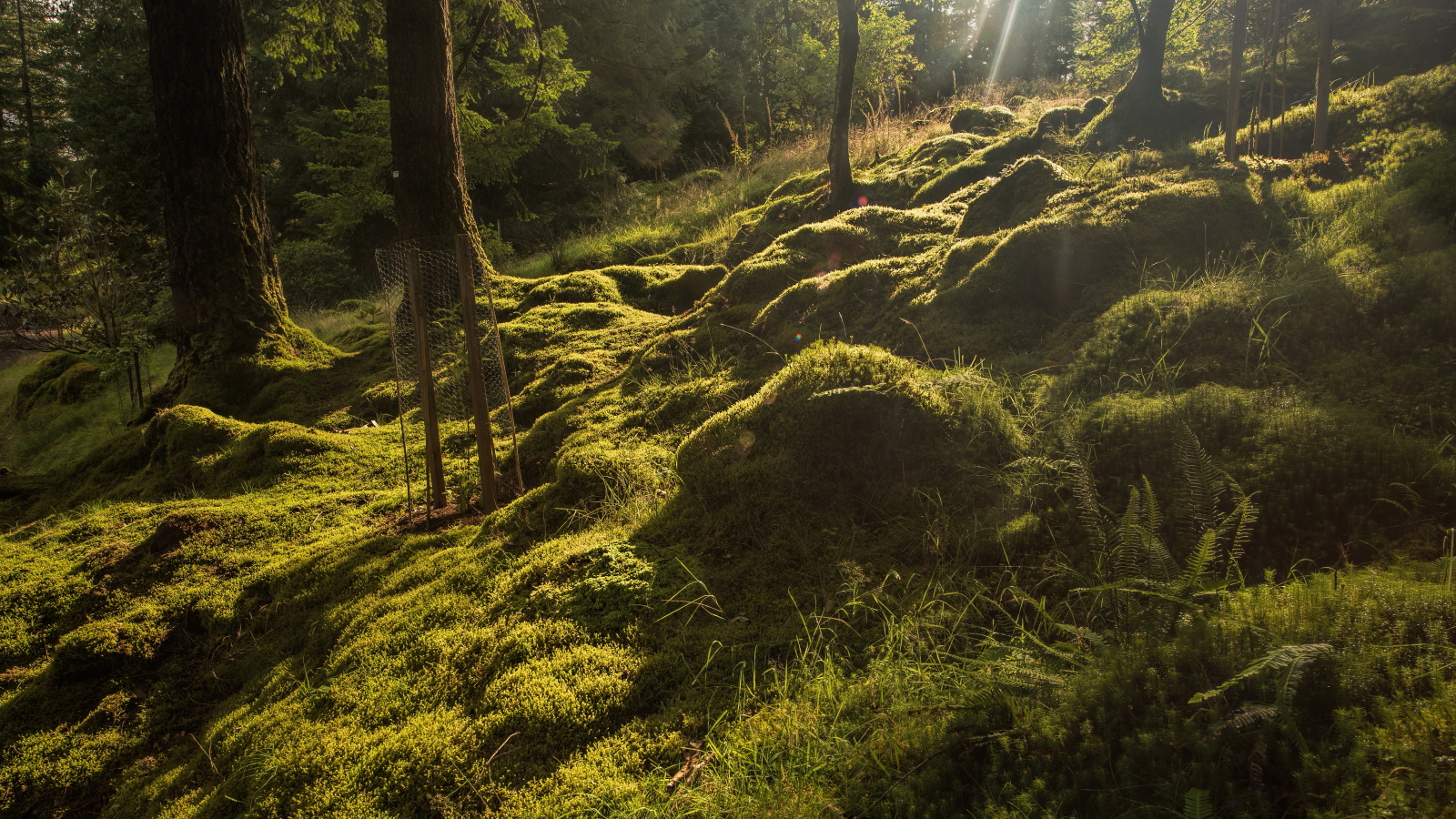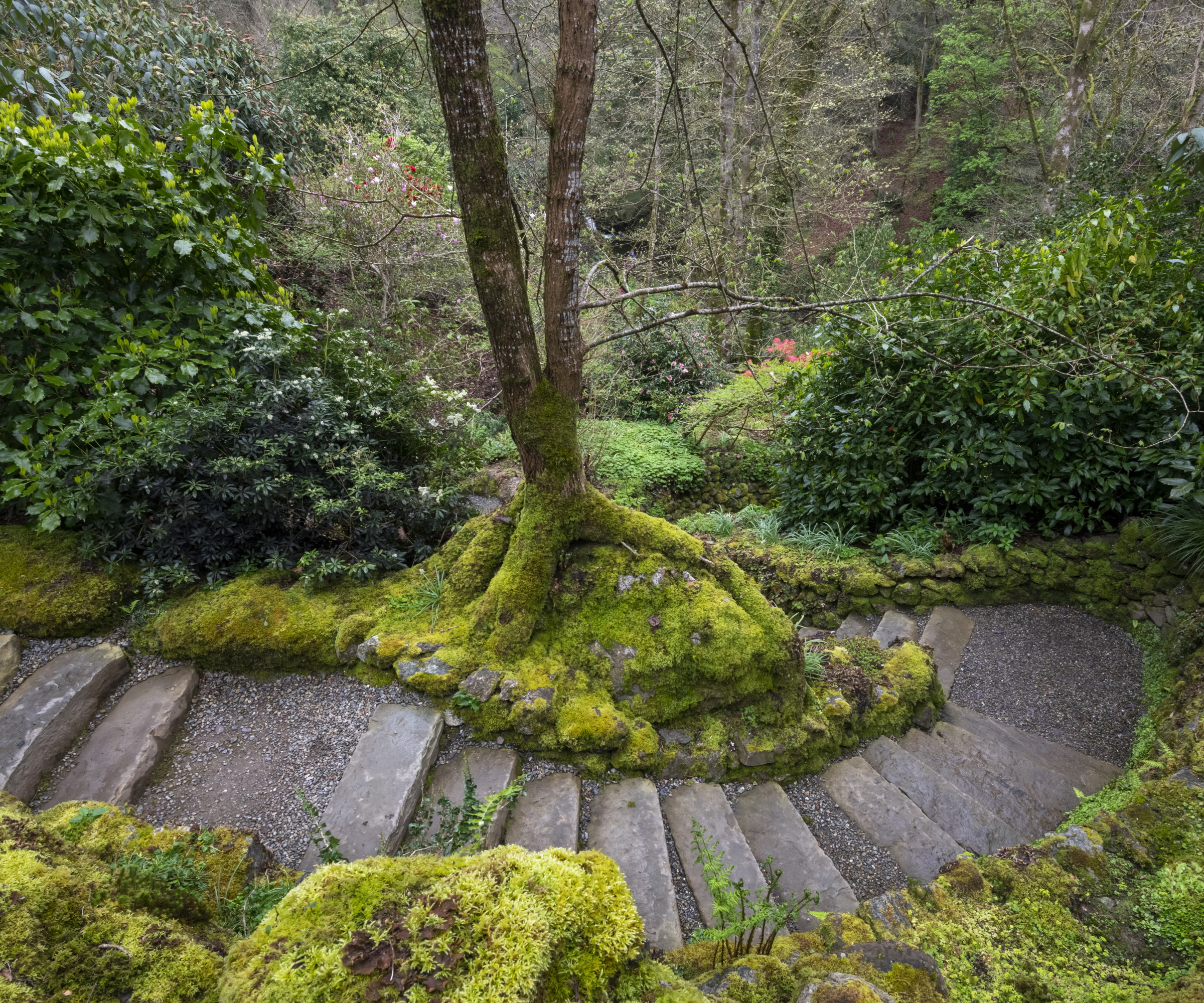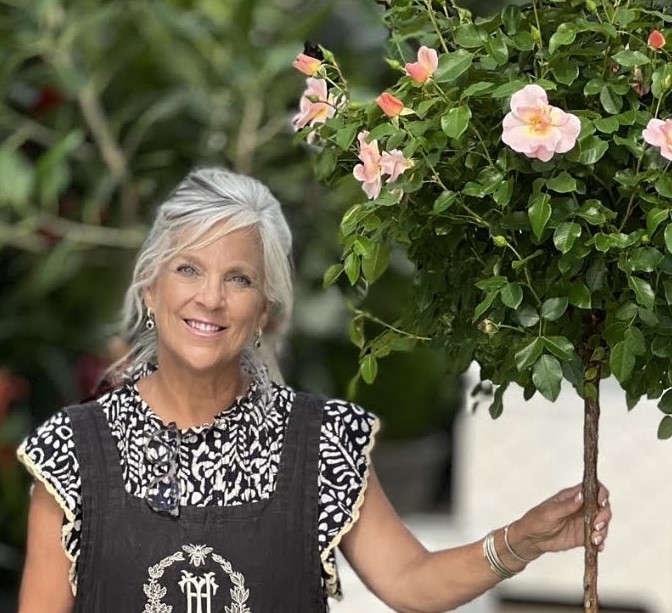How to grow moss – the greenest groundcover for shade gardens
Easy to grow and environmentally friendly - is moss the shade-tolerant plant that gardeners need to rethink?


Moss is a remarkable plant, thriving where other plants will not grow. Forming a dense mat of lush green, it is a useful ground cover for challenging situations in the backyard. Moss is typically found in moist, humid and shaded areas, such as in woodlands, carpeting the forest floor and growing over roots and rocks.
There is certainly something special about moss that is difficult to explain. It seems fresh and verdant, but aged and mysterious, factors that help explain why gardeners and landscape designers are rethinking moss's role in the backyard in recent years and are now looking at how to landscape with moss.
Moss has, I think, suffered from an unfair reputation. It is thought of as a menace to lawns, growing atop roofs and covering paved areas. Indeed, when growing where it is not wanted, moss can infuriate many of us, but perhaps a deal can be made, offering up some small space for moss to grow in the backyard, where other plants are not able to establish.
I have used moss in shaded gardens in years previous. Instead of fighting a losing battle by trying to grow something that will not grow - trying to establish a lawn under large trees, for example - embracing moss within your backyard can be a sensible and practical way forward. Is it time we reconsider moss and its use in our plots?

How to grow moss
Growing moss can be an effective groundcover plant in challenging situations. With a preference for moist, humid and shaded areas, moss can quickly turn a dark and lifeless corner into a green sanctuary.
Things to know about moss

'Moss will grow in places where other plants will struggle,' says Tricia Hunt, plant expert and owner of Millstone Market & Nursery, in Tennessee. 'There are over 12,000 known varieties of moss, so there will be moss to suit you.' You will often find 'sheet moss or mood moss at garden stores,' Tricia says, but there are many other varieties that you can find. Fern moss, for example, has delicate, fern-like foliage that is very attractive if covering rocks or lining a garden path.
Most varieties of moss prefer moisture and shade, 'growing best in shaded areas with high humidity,' Tricia says. It is always best to consider the conditions where moss does best when growing naturally. In forested areas, sunlight is limited, and moisture is high. Finding a suitable location that will emulate these growing conditions, under trees in your yard, will enable moss to happily establish itself. By doing this you will find that 'moss is both low maintenance and will stay green all year long,' Tricia says.
Design expertise in your inbox – from inspiring decorating ideas and beautiful celebrity homes to practical gardening advice and shopping round-ups.
Though it's not typically hard to care for, a situation that is both dry and sunny will quickly destroy your moss, transforming your green carpet into a frazzled patch of brown.
'Direct sun is a hard no,' Tricia continues. 'Moss is a shallow plant, and direct sunlight will quickly dry it out and kill it.' Indeed, unlike other plants, moss does not have roots. Instead, moss has small hair-like rhizoids that help to anchor it, but absorbing water is not their primary function. Moss draws in moisture and minerals from rain and water in the air around them, which explains why the direct sun will dry them out all too quickly.
Planting tips for moss:
- Soil: Moss prefers growing in slightly acidic soil, which is a typical trait of woodland areas. If you are not sure what your soil pH is, consider assessing it using a device such as this soil meter from Walmart. One option is to make the soil slightly more acidic, using a product such as this soil acidifier from Garden Goods Direct. It is recommended to plant moss in the spring, to allow it to establish itself before the warmth of summer.
- Light: Most moss varieties prefer partial to full shade. Whilst many will tolerate some sunlight, 'no variety of moss will do well in full sun,' says Tricia. 'Planting in full sun will result in the browning of moss.'
- Watering: 'There is a sweet spot to be found regarding moisture and humidity,' says Tricia. Moss has a preference for growing in damp and humid environments, so some watering will be necessary after planting new moss to help it establish. Tricia recommends using collected rainwater to water moss, as opposed to using treated water which can often be high in chlorine, which moss is highly sensitive to. Collecting rainwater using something like this rain barrel from Walmart is a sustainable way to water your plants.
- Fertilizing: 'You do not need to fertilize moss,' Tricia says. 'If you are growing moss in a suitable location where it would naturally grow, it will be self-sufficient.'
- Additional notes: Planting moss on walls or among rocks can be difficult. One trick is to make a moss paste, using natural yogurt and chopped-up bits of moss. Painting walls or rocks with this paste will eventually lead to moss growth.

Tricia is the owner and operator of Millstone Market & Nursery, located in the heart of Germantown, Tennessee. Tricia has grown and used moss for several years, appreciating the utility of this green groundcover.
How to use moss in your yard

Landscape designers value moss for its versatility and aesthetic appeal. Even in small spaces, moss can be incredibly useful, 'adding a soft texture, and naturalistic ground cover under trees and in shaded corners,' says Rachel Bull, Head of Gardens at Homes & Gardens.
There is certainly 'something magical about moss,' Rachel continues, 'softening the edges of hard landscaping features in the garden, and adding a sense of calm and tranquility to backyards.'
The resilience and adaptability of moss make it well-suited for use in various garden styles, from Japanese-inspired gardens where it can be used to create small mounds under large shrubs and trees, to English woodland gardens, grown alongside ferns and native shrubs to create a natural aesthetic.

Rachel is a gardening editor, flower grower and floral designer. Her journalism career began on Country Living magazine, sparking a love of container gardening and wild planting. After more than a decade writing for and editing a range of consumer, business and special interest titles, Rachel became editor of floral art magazine The Flower Arranger. She then trained and worked as a floral designer and stylist in London for six years, before joining the Homes & Gardens team.
FAQs
When is the ideal time to plant moss?
The best time to plant or propagate moss is in the early part of spring, allowing as much time as possible before the summer heat becomes challenging for young plants. Whilst moss plants will be slightly protected from the heat of the sun, growing in a shaded environment, it is always recommended to give new plants as much time as possible to establish themselves before the temperatures rise.
Can you walk on moss?
Most moss varieties can tolerate light foot traffic but too much can cause damage. One idea is to include stepping stones within the moss, to act as a path that will guide visitors through the garden and backyard, without causing damage to the moss.
Moss is an understated and undervalued plant that helps to add greenery to difficult, shaded locations. As mentioned above, moss is highly valued in Japanese garden design, adding green to any space whilst also helping to create a calming sanctuary. You can also grow moss indoors for an interesting take on indoor gardening.

Thomas is a Content Editor within the Gardens Team at Homes and Gardens. He has worked as a professional gardener for both public spaces and private estates, specializing in productive gardening, growing food and flowers. Trained in Horticulture at the Garden Museum, he has written on gardening and garden history for various publications, including The English Garden, Gardens Illustrated, Hortus, The London Gardener and Bloom. He has co-authored a Lonely Planet travel book, The Tree Atlas, due out in 2024.